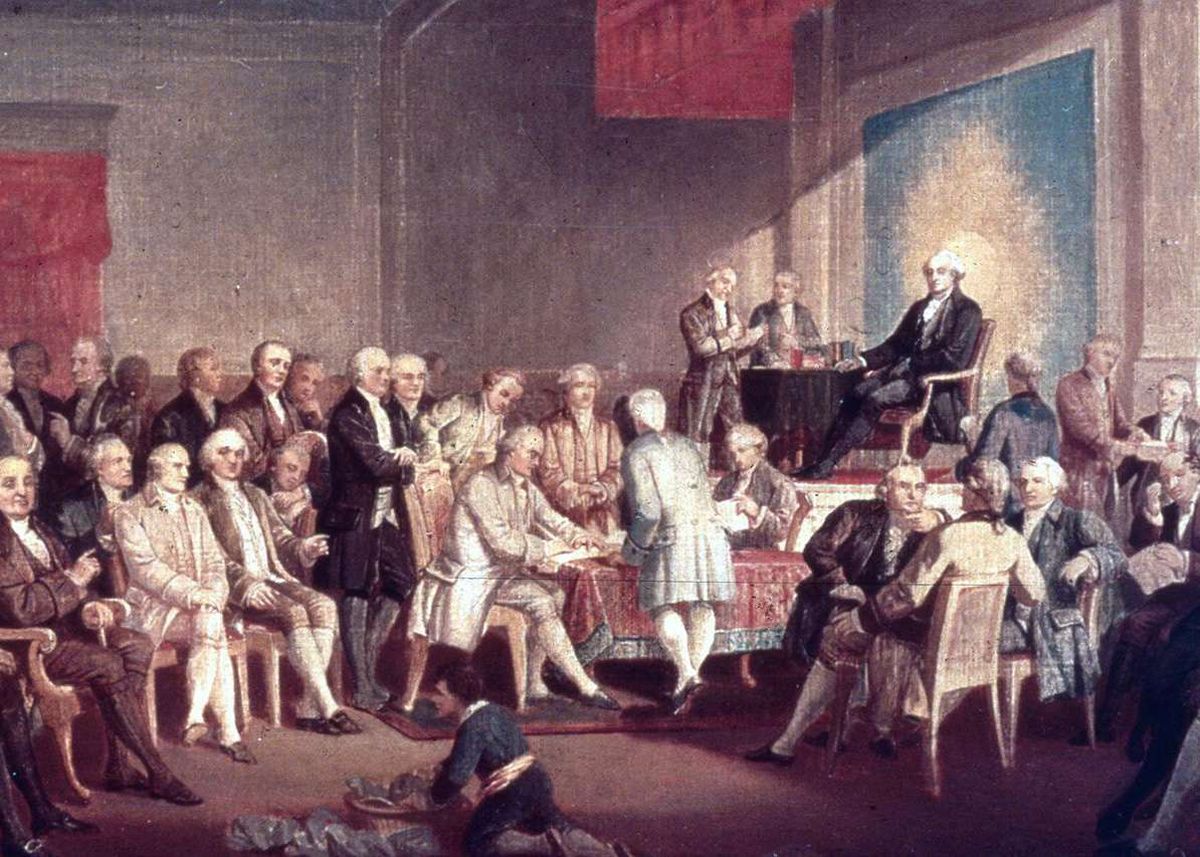
Did you know the United States Constitution was ratified on June 21, 1788? This historic document, the backbone of American democracy, has shaped the nation for over two centuries. Crafted during the Constitutional Convention in Philadelphia, it replaced the Articles of Confederation to create a stronger federal government. The Constitution consists of a preamble, seven articles, and 27 amendments. The first ten amendments, known as the Bill of Rights, guarantee fundamental freedoms like speech, religion, and the press. Ever wondered why the Constitution is so significant? It established the three branches of government—executive, legislative, and judicial—each with checks and balances to prevent any one branch from becoming too powerful. This living document continues to evolve, adapting to the changing needs of society. Dive into these 25 fascinating facts to learn more about the cornerstone of American governance.
The Birth of the Constitution
The United States Constitution, ratified in 1788, is a cornerstone of American democracy. It established the framework for the federal government and has been a guiding document for over two centuries. Here are some fascinating facts about this historic document.
-
The Constitution was signed on September 17, 1787, but it wasn't ratified until June 21, 1788, when New Hampshire became the ninth state to approve it.
-
The Constitutional Convention, where the document was drafted, took place in Philadelphia's Independence Hall.
-
George Washington presided over the Constitutional Convention, lending his considerable influence to the proceedings.
-
The original document consists of a preamble and seven articles, outlining the structure and powers of the government.
Key Figures and Influences
Several influential figures played crucial roles in the creation and ratification of the Constitution. Their contributions helped shape the nation's future.
-
James Madison, often called the "Father of the Constitution," played a pivotal role in its drafting and promoting its ratification.
-
Alexander Hamilton, another key figure, wrote 51 of the 85 Federalist Papers, which argued for the Constitution's ratification.
-
Benjamin Franklin, the oldest delegate at 81, provided wisdom and mediation during the convention.
-
Thomas Jefferson, though not present at the convention, influenced the document through his correspondence and ideas.
The Bill of Rights
The first ten amendments to the Constitution, known as the Bill of Rights, were added to address concerns about individual liberties and government power.
-
The Bill of Rights was ratified on December 15, 1791, just a few years after the Constitution itself.
-
James Madison also played a significant role in drafting the Bill of Rights, ensuring protections for freedom of speech, religion, and the press.
-
The First Amendment guarantees freedoms concerning religion, expression, assembly, and the right to petition.
-
The Second Amendment protects the right to keep and bear arms.
Amendments and Changes
The Constitution has been amended 27 times, reflecting the evolving needs and values of American society.
-
The 13th Amendment, ratified in 1865, abolished slavery in the United States.
-
The 19th Amendment, ratified in 1920, granted women the right to vote.
-
The 22nd Amendment, ratified in 1951, limits the president to two terms in office.
-
The most recent amendment, the 27th, was ratified in 1992 and deals with congressional pay raises.
Unique Facts and Trivia
Beyond its historical significance, the Constitution has some unique and lesser-known aspects that add to its intrigue.
-
The original document is written on parchment, a durable material made from animal skin.
-
It is housed in the National Archives in Washington, D.C., where it is carefully preserved and displayed.
-
The Constitution is the oldest written national constitution still in use today.
-
Rhode Island was the last of the original 13 states to ratify the Constitution, doing so on May 29, 1790.
The Constitution's Global Influence
The United States Constitution has inspired many other nations in drafting their own governing documents.
-
The French Constitution of 1791 was influenced by the American Constitution and the principles of the Enlightenment.
-
Many countries in Latin America looked to the U.S. Constitution when establishing their own democratic governments in the 19th century.
-
The Japanese Constitution, adopted in 1947, was heavily influenced by the U.S. Constitution and the post-World War II occupation.
-
South Africa's post-apartheid constitution, adopted in 1996, drew inspiration from the U.S. Constitution, particularly in its emphasis on human rights.
-
The U.S. Constitution's principles of checks and balances, separation of powers, and federalism have been emulated worldwide, demonstrating its enduring legacy.
The Constitution's Lasting Impact
The United States Constitution remains a cornerstone of American democracy. Its enduring principles have guided the nation through turbulent times and remarkable progress. From the Bill of Rights to the amendments that followed, this document has adapted to meet the needs of a changing society. Its checks and balances ensure no single branch of government becomes too powerful, safeguarding individual freedoms and justice. Understanding these 25 facts about the Constitution not only highlights its historical significance but also underscores its relevance today. As citizens, knowing these details empowers us to appreciate and protect the rights and liberties we often take for granted. The Constitution isn't just a relic of the past; it's a living document that continues to shape our present and future. Let's cherish and uphold its values for generations to come.
Was this page helpful?
Our commitment to delivering trustworthy and engaging content is at the heart of what we do. Each fact on our site is contributed by real users like you, bringing a wealth of diverse insights and information. To ensure the highest standards of accuracy and reliability, our dedicated editors meticulously review each submission. This process guarantees that the facts we share are not only fascinating but also credible. Trust in our commitment to quality and authenticity as you explore and learn with us.
